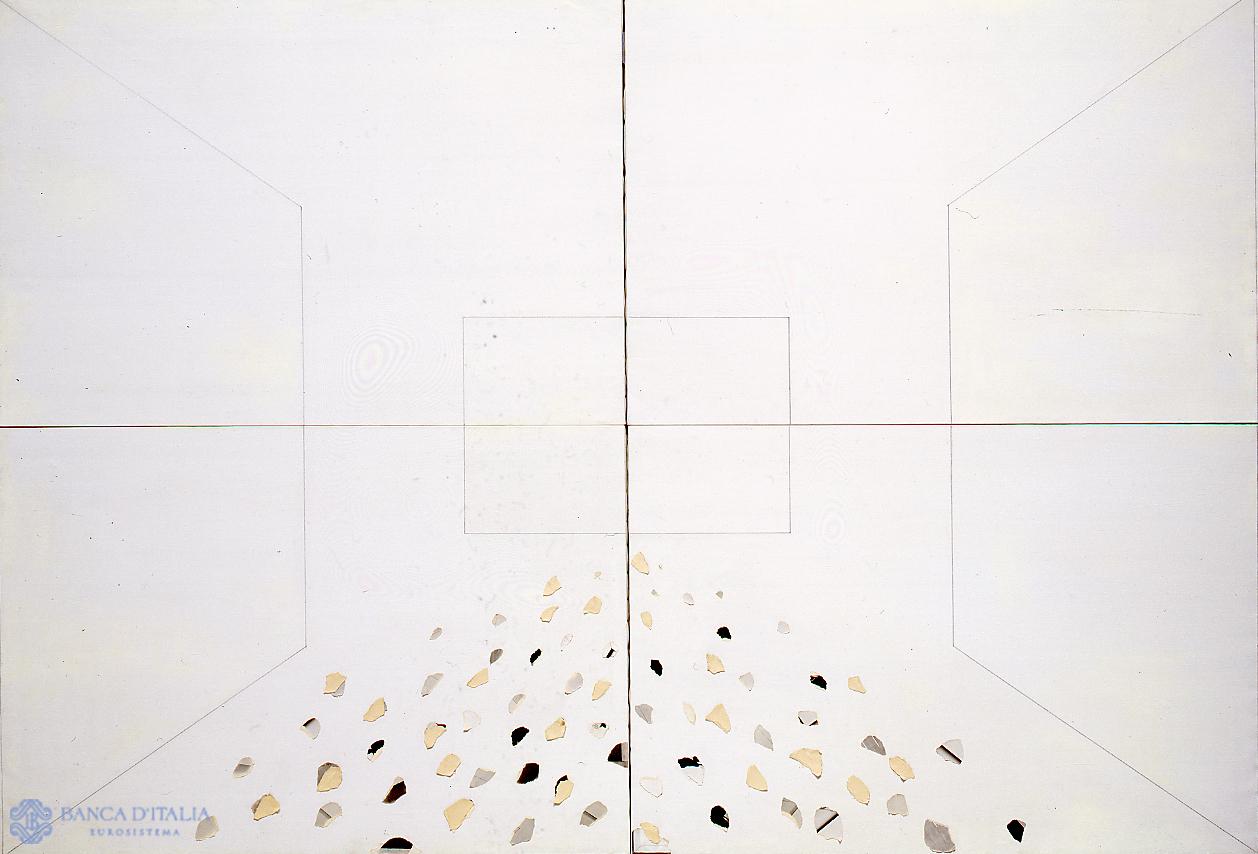Giulio Paolini was born in Genoa in 1940. He moved to Turin, where he emerged precociously as one of the leading practitioners of so-called conceptual art. He made his debut at the Premio Lissone in 1961 (his first one-man shows were at La Salita in Rome in 1964 and the Notizie in Turin in 1965). By that auroral date he had already produced the work that in some way embodies the essence of his poetics: Disegno geometrico (1960), which he would always use to head the main retrospectives of his work. The painting embodies the thesis that “less is more,” that truth in art – art’s very possibility of existence – is to be sought in the minimal gesture of a raw canvas traversed by a few geometric, absolute signs, traced with rule and compass. Anti-emotive signs, destitute of all creative furor, which design only the space of any possible painterly action: “the quest,” he would write, “is for the absolute image, inherent in the very nature of the canvas and the employment of an elementary technique.”
Since then, for half a century now, Paolini’s artistic quest, to considerable international acclaim, has never deviated from the standards of rigour and self-control prefigured in that initial work. Geometry remains guide and refuge, like the constant comparison with the art of the past, with respect to which Paolini harbours ambivalent feelings not free of melancholy, that despairing sense of the impossibility of regaining its perfection that typifies the neo-classical attitude, in whatever era or country it is manifest. And it may be this sense of fatal loss that characterizes his work in the framework of a broader movement and sensitivity, generally called “conceptual” art, of which Paolini is one of the most eminent figures.
Giulio Paolini
Giulio Paolini (Genoa 1940)
20th century AD


